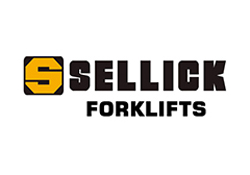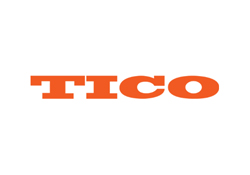
With supply chains still reeling from myriad disruptions at the start of the 2020s, the pressure to maximize efficiency and control costs is intense. But while businesses find their footing, manufacturing, and heavy-duty industries in particular are facing an even greater time of transition. Government emissions targets, labor challenges and the continued advance of data and automation are changing how they move and manage goods.
This challenging backdrop demands a lean, mean lift truck fleet to help companies protect slim margins and get the job done.
From assessing site-specific needs and harnessing fleet data, to service and ongoing fleet management best practices, our partners at Hyster® have provided a thorough view of how operations can optimize their lift truck fleet.
SAVING MONEY IS JUST THE START
There are several regular goals for a fleet management program, and one of the most common is saving money. And while adding the cost of a consultative fleet management service might seem counterintuitive for operations charged with cutting spending, the reality is that the returns of such a program more than outweigh the costs. Businesses can achieve a lower total cost of ownership through rightsizing the lift truck fleet, identifying avoidable expenses and standardizing labor rates, parts pricing, and preventive maintenance practices. Savings will vary greatly from one operation to another, but as an example, a leading manufacturer of building products was able to reduce their rental fleet costs by 89% within one year and lower repair costs across several facilities by 90%.
While the case for cost savings is well-established, there are other reasons to pursue a fleet management program. Intensive industries like paper and lumber manufacturing rely on high equipment uptime to keep product moving – even more so in the face of supply chain disruptions and demand fluctuations. For those companies, a real value driver of fleet management is the access to trained technical labor for fast, high-quality and cost-effective service, with less reliance on their own internal support capabilities.
Other operations may introduce a fleet management program to gain better visibility into their fleet and associated costs. This can be especially true for businesses where lift truck usage and maintenance are subject to the complexities of managing hundreds of lift trucks across multiple facilities. Whether the goal is lower total cost, streamlined service and improved productivity or more informed, data-driven management decisions, it’s important to recognize that fleet management is not a one-time decision or activity, but an ongoing, collaborative process.
PART 1: FLEET MANAGEMENT BASICS
Fleet management is a multi-part process that involves three main parties. There’s the end user, whose fleet is being optimized, the corporate fleet management organization who manages the service process and provides fleet analysis and recommendations, and the local dealer who provides front-line service and support. It all comes together in a continuous loop, designed to optimize all aspects of a lift truck fleet, from size and composition to service and support.
Determine a Baseline
As the saying goes, what gets measured gets managed, so a fleet management program typically begins with a thorough site survey and assessment of the customer application and fleet to establish a baseline and understand areas of opportunity.
Truck Information
- Type, product class
- Age and condition
- Duty Cycle
- Annual hours of use
Application Information
- Work Environment
- Indoor or Outdoor
- Temperature
- Condition of floors/terrain
- Obstacles
- Workflows
- Which trucks are used for which purpose(s)
Organizational Processes and Preferences
- Service Processes
- Regular maintenance
- Unexpected, urgent service issues
- Budget and Billing
- Full maintenance based on a full budget
- Time and material – pay as you go model
- Truck financing or leasing
Effective fleet management does not take a one-size-fits-all approach, so an important part of the end user’s role in this initial evaluation is communicating the current state of their fleet. Equally important is communicating the organization’s priorities, as determining which pain points, needs and objectives carry the greatest value helps inform how the fleet management program is structured. For example, rather than emphasizing performance and features of the actual equipment, some customers prioritize service – how quickly can service providers respond and how well do they maintain the equipment. When developing a fleet management program, take stock of what is most important to ensure that recommendations ultimately align with business priorities.
PART 2: MAKE RECOMMENDATIONS
With the assessment complete, it’s time to trim the fat. The corporate fleet management team provides a suite of recommendations across several focus areas, including an optimal composition for the core, flex, standby and seasonal segments of the fleet.
This fleet composition evaluation includes a cost analysis for each existing lift truck unit and ultimately a repair, replace or retire recommendation for each. For example, the end user may be advised to order a specific quantity of new trucks for delivery five months in the future – complete with preventive maintenance and parts pricing – based on the cost analysis, projected hours and service life of the current equipment, judged against anticipated fleet requirements.
For some operations, rental units can be the most practical way to scale for peak demands, without unnecessarily paying for trucks beyond their base needs. If rental trucks are a part of the recommendation, rental rates will often be reflected to help operations make informed decisions about temporarily increasing their capacity. Recommendations are also provided for a flex portion of the fleet, which can be shifted around internally from department-to-department or facility-to-facility to provide additional capacity as demand for certain products or processes dictates.
Standby trucks, another segment separate from the core, fully utilized fleet, can help operations fill gaps in capacity caused by trucks that are out of service due to preventive maintenance or an unplanned outage. As any manager who has endured unexpected downtime can attest, a certain degree of redundancy can be key to protecting productivity and business continuity. The amount of redundancy will depend on the operation’s size, schedule, maintenance practices and tolerance for equipment downtime, but for larger organizations, something in the ballpark of one standby unit for every 12 to 15 lift trucks is a common recommendation. For smaller businesses without the same tolerance for redundancy, an alternate approach should be identified to address unexpected downtime, such as writing a loaner provision into the service contract.
There are three other factors key to producing the lowest total cost of ownership:
- Unified fleet – standardized specs across trucks can help streamline workflows, balance the workload across trucks for more even use and, in leasing scenarios, support the highest residual value at the end of the lease term.
- Optimized product life – balancing equipment use across the entire fleet can avoid an inordinate level of wear and tear on any one unit, while also helping match actual use to the contracted term in leasing agreements.
- Added value solutions – depending on unique operational needs, other elements like motive power options, attachments and telemetry systems can help drive efficiency. For example, not all facilities allow operators to change out depleted lead-acid batteries. But that can mean having an excess of trucks on hand to prevent bottlenecks and lost productivity due to operators waiting for battery swaps. Opting for a power option with a simpler charging or refueling process, like lithium-ion or hydrogen fuel cells can streamline those labor and equipment requirements.
PART 3: DEFINE SUCCESS
Recommendations are only as good as the results they produce, so for the end user, being able to measure results is essential. So too, is being able to communicate the meaningful impact of those results throughout the organization – from purchasing to operations and maintenance.
Savings, most easily expressed on an annual basis, are an important measure for judging performance, especially for organizations with a primary goal of reducing costs. Other quantitative service and operations metrics to consider when evaluating fleet management include:
- Preventive maintenance (PM) completion rate –how consistently are PM tasks being completed relative to the specified intervals for each truck?
- Average response time – from the time the issue was reported, how long did the service organization take to respond?
- Average days to repair – how much time elapsed between the truck reaching the service team and the completion of the repair?
- First-time fix – was the repair or replacement resolved successfully the first time, or were multiple attempts required?
- Uptime percentage – what percentage of time is the equipment fully operational?
- Fleet cost per hour – factoring in service and parts costs, what is the hourly cost breakdown for operating the equipment?
- Cost of avoidable damage – what is the cost of preventable, operator-inflicted damages? Could technology like telemetry or operator assist systems support better adherence to lift truck operating best practices?
Other benefits are not so obviously expressed by numbers, such as:
- Communication – how communicative are the manufacturer and dealer about equipment status and repairs?
- Administration of services – how effective are the systems and processes of the fleet management program?
- Ongoing optimizations – from influencing product development to adjustments to service processes, how do regular business reviews influence the ongoing management of the fleet?
TELEMETRY
While not essential, lift truck telemetry systems can be a valuable tool for fleet optimization. By gathering data 24/7, providing real-time access to information and issuing proactive updates, these systems can help managers monitor truck status, utilization and maintenance needs.
Telemetry can also help operations better manage and digitize processes like pre-shift OSHA checklists. While the benefits of leaving paper-based systems behind may seem minor, in some cases, that alone can justify the cost of telematics. The savings otherwise associated with collecting and filing checklists manually can accrue quickly, even amounting to tens of thousands of dollars annually.
ONGOING SUCCESS: FLEET MANAGEMENT NEVER STOPS
Fleet management is an iterative process and the providers that do it best participate in a dialogue, not a data dump that leaves end users with more questions than answers. The success of a program rests on a robust partnership, in which the relationship manager has a clear understanding of the customer’s operation and objectives. Through regular reporting and business reviews, fleet management services can produce lift truck fleets that maximize value and efficiency – and allow operations to remain focused on managing their core business.
Gregory Poole Lift Systems will provide you with a fleet analysis by a qualified representative to assist you in making the right decisions when it comes to your fleet of lift equipment. Contact us to get started on your evaluation to become more efficient and control costs in your operation.











